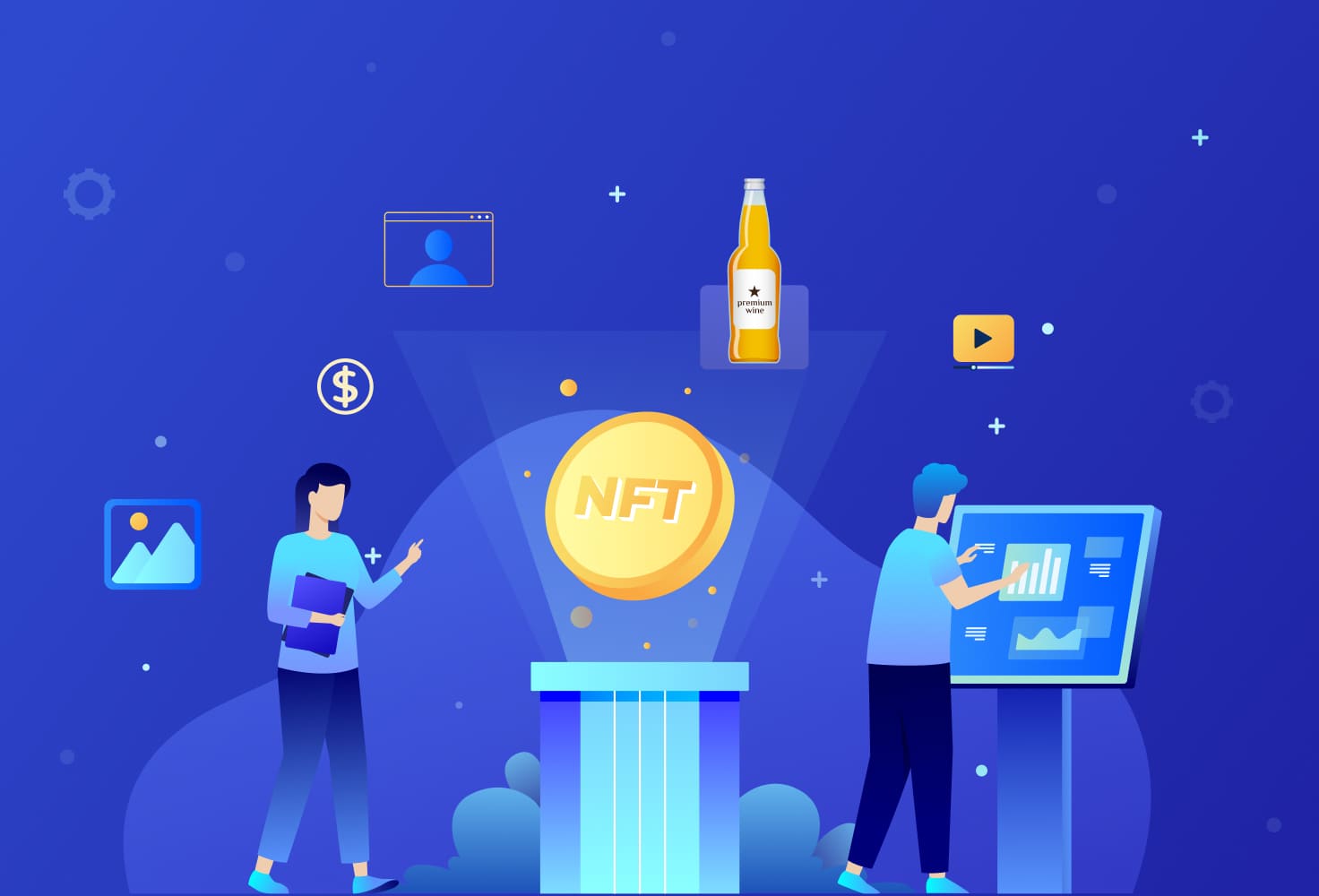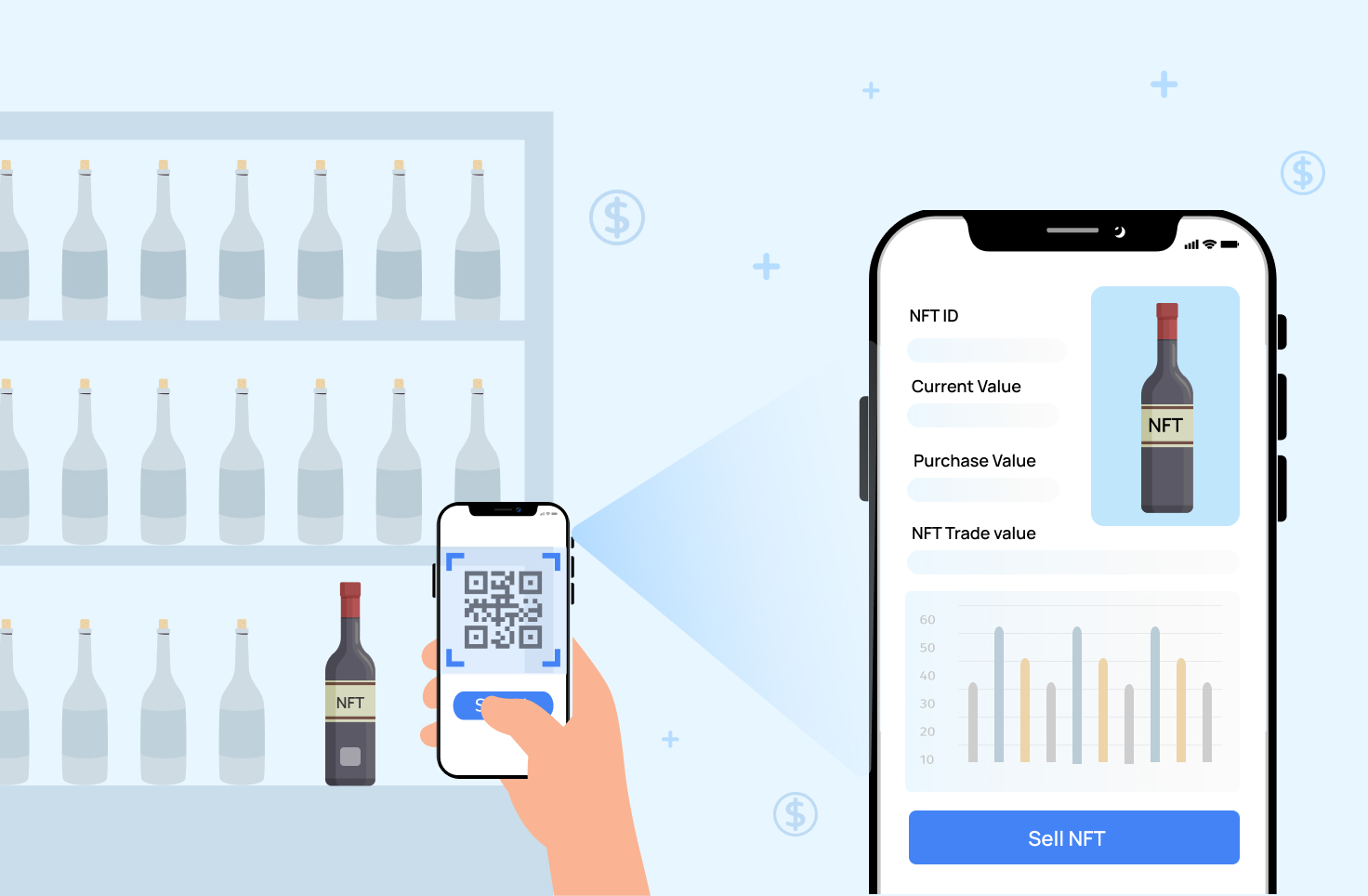Technology is transforming the way business operates, at an accelerated phase, like never before. Consumers are connected, and experiences are decentralized. Web3 enables the disintermediation of business models by encoding existing functionality into autonomous smart contracts and transforming the value to users and suppliers.
One such proven use case is NFT tokenization in the wine industry; producers bring new technology flavors to their loyal consumers. Innovation in this space is solving multiple problems and upholds stakeholder's interests, i.e., producers, regulators, retailers, and consumers.
But before we get into the details of "How NFT staking is transforming the Wine Industry", let's dive in.

What do Wine NFTs mean for wineries?
Throughout the wine-producing process, starting from vineyard productivity, stocking, distribution, and consumer community management, the wine industry has unique challenges compared to the distillation liquor categories. Here are a few of those major challenges listed.
- Vineyard Development and quality grape production
- Managing the consistency in wine quality and production volumes
- Sustain under the nature and climate uncertainties
- Brand Management and sustainable growth.
- Adopting new technologies and leading the competitive edge
- Compliance with global and local regulatory norms
- Securing capital and nurturing investor's forum
- Direct-to-consumer sales and community building
Will it be a great taste if we say this blog introduces a few modern solutions for the above-said challenges? Will it be a time for stakeholders to cheer the old wine challenges in a new bottle of technology?
What is NFT?
NFT is a Non-Fungible Token that holds unique identification codes and is a cryptographic asset on the blockchain for the mapped physical object. Thus, each NFT is unique and can be distinguished by its identification codes and metadata.
As NFTs are the outcome of smart contracts executed on the blockchain, they are logical tokens linked to physical assets; hence NFTs can be virtually traded, transferred, and monetized under various business models. Whether the Red or White NFTs bring a spark to the wine industry with their immutable nature, they solve some of the wine industry's rudimentary yet priority problems.
What is NFT staking?
NFT staking is a Blockchain mechanism that offers NFT tokens to buyers when the wine is still in the warehouse or while grapes are grown in the vineyard. It can also support established wineries and producers by providing liquidity before the harvest. A new kind of crowdfunding, a similar concept, exists for premium wine, where an investor can purchase the wine a couple of years before it gets bottled. And in that way, buyers can help the wineries and the producer to harvest the best quality grapes and wine with Capital contribution.
Let's discuss all the flavors and aromas NFT tokens bring to the wine table!
1. Securing capital and nurturing investors -
Consumers who invest by buying NFT tokens will notice the value of the token growing along with the age of the wine; now, producers offer various mechanisms to redeem the NFT tokens or own the vintage physical wine bottle at an appropriate time. They sell these NFTs to crypto enthusiasts and wine communities on various galleries, events, and networks.
The aged wine price grows exponentially depending on the wine's popularity and brand presence in the market; this will relieve multifold gains to early NFT holders, which builds the buyer community stronger.
2. Direct-to-consumer sales and community building -
When Producers sell products on e-commerce platforms, through the distributor network, or the regulatory bodies, producers don't get to know the consumers. It's like a wall; they don't know where the products are being consumed or where the consumers are from. This is where Ciphercode's NFT solution overcomes the challenge, and it is of great value to producers and the wine ecosystem.
To deliver a personalized experience, Producers need to build unique channels. Ciphercode's Tech stack turns every unit-level product into a unique consumer engagement channel; it provides secure engagement, which starts by assigning a unique Cryptoblock, the first step of NFT staking.
3. Adopting new technologies and leading the competitive edge -
NFTs are virtual tokens that can be mobilized across multiple platforms, wallets, and marketplaces. One of the consumer-enticing versatile features of NFT is letting users take their avatars to the metaverse and virtual universe to showcase and trade in those immersive spaces.
4. Vineyard Development and quality grape production -
NFTs are minted in batches and published on marketplaces in advance, even before the harvesting of the vineyard. The power of community participation in NFT purchase and crowdfunding leads to early capital barreling even before the wine pressing and fermentation, perhaps even before the vineyard harvesting. This capital helps to fertilize the healthy grape crop and tasty wine.
5. Compliance with global and local regulatory guidelines -
Stringent and regressive government rules with different taxations across various states and regions led to operational inefficiencies, though wine is gradually becoming part of urban lifestyle. Unfavorable rules for the domestic marketing of wines are a bottleneck for the industry's growth. Technology can help wine producers to overcome these constraints through smart consumer engagement and community-building initiatives.
6. Capital Raising -
Challenges begin with expensive agricultural land that demands a massive upfront investment. "Even with the right capital in place, finding a balance between land's potential and its viticultural proficiency has its gaps. Administering consistent quality out needs a capital investment in various departments. Given the risk and uncertainty, capital raising is challenging; NFT staking delivers a fine balance between the investor's and producer's interests.

Types of Wine NFT -
There are two types of Wine NFTs, and they are -
1. General Collectibles Wine NFTs -
The General collectibles Wine NFTs are digital assets, meaning the buyer won't get the chance to taste the wine, yet they can be purchased in the form of NFTs; these are digital arts available on NFT marketplaces listed by wine brands. The expensiveness of these Wine NFTs depended on the rarity of the digital asset.
2. Physical Twins Wine NFTs -
These are the cru class NFTs under the spotlight of this blog; within Physical-Twin NFTs, there are two types, incentive and reward NFTs. Incentive NFTs are claimed post-purchase of a bottle, whereas Reward NFTs are pre-booked and mapped to vintage wine to be bottled and available in the future for trade having higher appreciation potential in some cases up to 100x.
New strategy for expanding customer base -
If the wineries only focus on the physical wines, they will only attract traditional wine buyers or collectors, limiting their customer base. But when NFTs are paired with the physical wine bottles, they can be paired with any digital artwork in the form of different digital collectibles for their wines. Now, wineries can promote their wines to new-age customers through NFTs.
Closing Thoughts -
NFT staking is a comprehensive scheme benefiting all the stakeholders, rewarding consumers for being loyal and participating in the investment cycle, benefiting wineries to overcome major challenges and regulatory in preventing unauthentic wine consumption.
Do you think NFT staking could provide more opportunities in the Wine Industry?
How does Ciphercode help brands in the Wine Industry?
Ciphercode holds the business model in the wine industry, which can connect any physical product with its unique virtual token in the form of Cryptoblocks
Cryptoblocks are cryptographically encoded QR codes combined with permissioned blockchain delivering unique engaging QR per each produced physical item through Brandwise platform and its ecosystem.
The Brandwise product line includes QReach and QSeal, which can be used by any brands that produce physical products and needs a solution for deep tracking the products, gaining consumer insights in real-time, and tackling counterfeits. Get in touch with our team to take your universe to the metaverse and immerse your consumer with digital experiences.






